If you’ve been on social media in the past five years, aesthetically, it’s clear—the lips have it. In the past, lip injections were often an undiscussed augmentation. (Then again, most aesthetic alterations were hush-hush until the online beauty renaissance.) Now, there’s over 1.6M hashtags on Instagram with tagged photos of lip injections and lip fillers, and Google searches for “lip injections near me” have continued to increase since 2014. People discuss their injectors openly. In short: filler provides major lip service for the non-invasive aesthetics industry.
From injecting filler directly in the lips to plump, to adding filler under the bottom lip to make what you already have look more pronounced, there’s several options out there for increasing your lip real estate, including tattooing. It’s not a new service by any means—permanent makeup has been around for decades—but gone are the days of the stark, fade-to-blue lip liner tattoos. Meet lip blushing, the tattoo that not only color corrects but enhances the shape and size of your lips, too.
What is Lip Blush?
“Lip blushing is a form of semi-permanent makeup. Essentially, it is a cosmetic tattoo of the lips that enhances the beauty of the natural lip color, improving the shape of the lips, giving definition and the illusion of fullness,” said Christina Son, owner of Sugarin Studio in Los Angeles. “This treatment delivers very natural results, once healed. Filler is great for creating volume in your lips, but lip blush delivers a more natural look and give the illusion of fuller lips.”
Here's how it works: A tiny mechanized needle deposits pigment into the lips, which builds layers of color. Son explained that it can be a corrective service to help even out the tone of the lips, but it can also help with asymmetry. The service can cost anywhere between $500-$1500 per appointment, depending on where you live.
Unlike traditional permanent cosmetic tattoos, lip blushing is an evolved service that’s meant to provide natural looking, long-lasting results. Christopher Drummond, licensed aesthetician and cosmetic tattoo master at PFRANKMD Skin Salon in New York, who has been offering permanent makeup services for the past seven years, has seen the evolution first-hand.
“Traditional permanent makeup uses a strong machine, synthetic pigments, and is embedded deep in the dermis. The permanent makeup of today is very different—we use organic pigments and modern, digital tools,” he said. “The results are much more natural looking.”
“Nowadays, the industry has developed great new techniques, like gentler machines and advanced semi-permanent makeup pigments,” mimicked Son. “I use high quality vegan line pigments. In the past, traditional carbon-based tattoo ink produced harsh results that would age to an unappealing color.”
How Permanent Is It?
Similar to a cosmetic service like microblading—which utilizes a blade to manually create small cuts in the skin, which are then filled with ink—the results vary person to person. Generally, lip blushing can last several years, although your lifestyle contributes to how well it maintains; smoking and sun exposure can speed up the fading process, and if you’re oil-prone, have an iron deficiency or use a lot of exfoliating products in your skin regimen, the pigment could fade more quickly, too.
A tattoo on the lips sounds painful—especially for someone who might be looking for an alternative to getting injected with filler. Son said most of her clients rate it three or four out of ten, with ten being the most painful; Drummond said his clients say there’s little to no discomfort. Both numb the lips prior to the service. If you’re worried about your pain tolerance, a pain reliever like Tylenol can be taken prior to the appointment; should avoid aspirin and ibuprofen, though, since they can thin the blood and cause more sensitivity. Drummond also suggests avoiding fish oil and vitamin E.
What to Expect From Your Appointment
So what happens in an appointment? First, there’s pout prep. A topical anesthetic is applied to pre-numb the lips for 20 minutes. Afterwards, the technician will draw the shape of the “new” lips so that you can evaluate and make any changes.
“Generally, I love to make the cupid’s bow a little more pronounced and add fullness to the sides of the lips, as sometimes the natural color is lost in those areas. Once the client is happy with the shape, we begin the actual tattooing,” said Son.
The procedure takes place over the course of an hour to an hour and a half, if not longer, depending on the look you’re going for. Once the appointment is completed, your lips may be swollen—it is a tattoo, after all—so you can ice them if necessary. Over the next week, your lips will start to heal, meaning they may scab, so it’s important to time this carefully around your schedule.
“For the first 24 hours, I advise my clients to gently blot their lips with a wet cotton pad and let them air dry. This is to keep the lips clean and remove any body fluids that have surfaced and prevent the fluids from forming scabs.”
When it comes to scabs, it’s important that they fall off naturally—picking them can result in scarring or loss of pigment in those areas. Son also suggests avoiding workouts and sun exposure for two weeks (a great excuse to avoid the gym if we do say so ourselves) and if you plan on getting injections, wait a full month. Sleeping on your face could also cause the scabs to fall off prematurely. An occlusive ointment like Aquaphor should be worn to keep the lips properly moisturized. (But then again, Aquaphor should always be worn because it’s a god-send.)
Initially, the color will be super vibrant, almost like a lip stain. “It is important not to be misled by the immediate ‘after’ results. The immediate results look nothing like when the lips are healed. Once healed, the color fades approximately 30-50 percent and also blends in with the natural lip color,” Son said.
Scabbing typically lasts five to seven days, and after four weeks, the lips should be fully healed to completion, but Son suggests a touch-up appointment around six weeks in the event the client wants to alter the shape of the blush, or to fill in areas that may have rejected pigment, although it’s not mandatory.
How to Find a Trained Technician
To find a trained specialist, it’s important to ask the right questions and not base your decisions off of social media. Always ask the technician how long they’ve been performing semi permanent makeup procedures—the longer, the better. If they have a Yelp profile, check for reviews within the last six months regarding the service you’re looking to get. Some states require technicians to obtain a blood-borne pathogen certificate or a body art/esthetician license, but each state varies, so check your state board to learn what qualifications cosmetic tattoo artists require.
“If they have further experience in other forms of semi permanent makeup, that’s always a bonus,” said Son. “If you have any skin or medical conditions, especially if it’s related to your lips, you should always inform the artist.”
For instance, if you have a history of cold sores or herpes, the procedure could trigger an outbreak. Prescribed anti-viral medication should be taken in advance of the appointment, and it should be noted that cold sores can affect the healed results of the lip blush.
Instagram is a great discovery tool when it comes to learning about these procedures and potentially finding a technician to work with, but take caution and look at the tech’s body of work, not just one or two photos.
“It is a good idea to review ‘before’ and ‘after’ photos, especially healed photos. Do not make a decision to work with an artist based off one photo. The artist’s work should be consistent and cohesive throughout,” said Son.
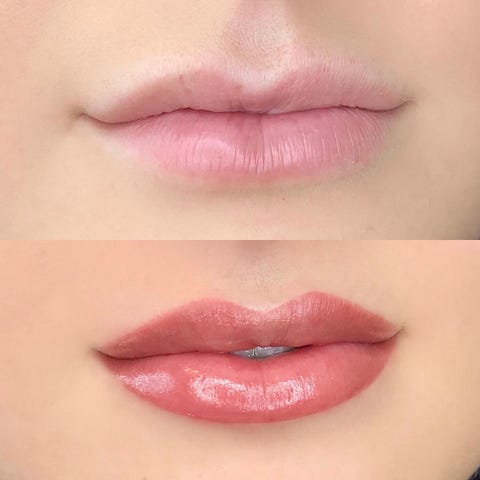
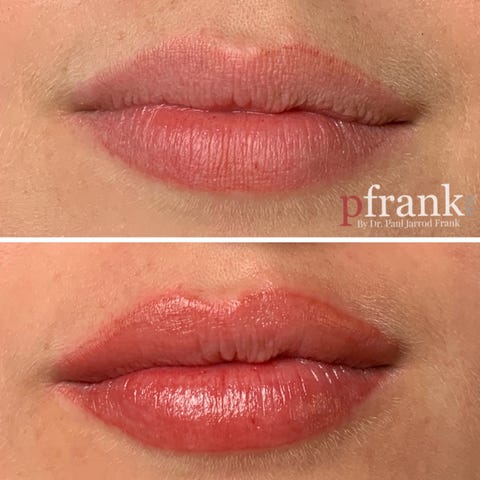
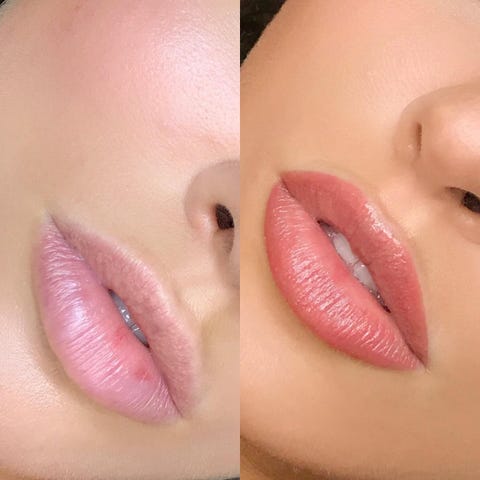
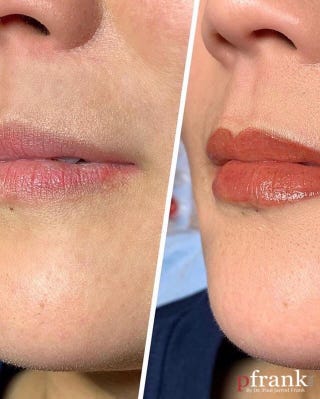
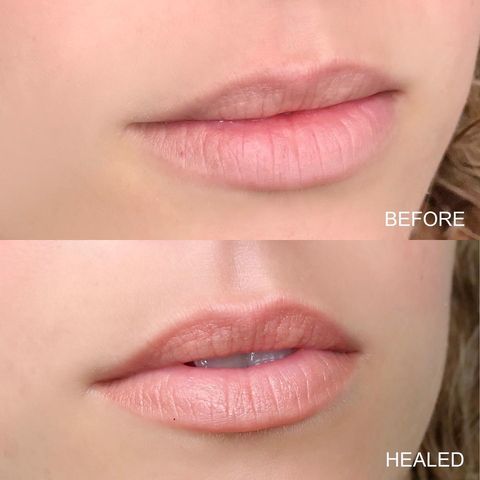
Comments
Post a Comment